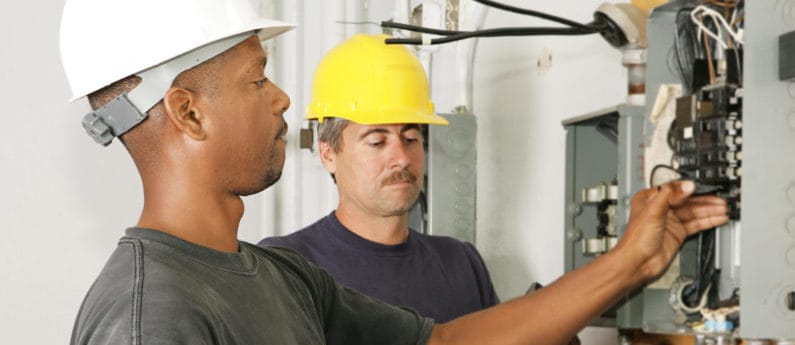
Online Training
Aren’t computers and the internet great? You can do so many things with them, even go to school online. Classrooms once occupied by an instructor lecturing you about the coursework can be replaced with a robot. Sort of…
The reality is that some things lend themselves to online training more than others. Take learning Algebra 101 – it could be argued that learning some basic academic subject like most undergraduate 101 course or basic theories such as thermodynamics or basic electricity can be learned online with the added benefit of YOU determining when to do the work – and there is no dress code for learning online. You log in 24/7 and the lessons are right there. For people that otherwise must drive long distances to attend school or those working – with a job, a family, and other responsibilities, this can seem almost too good to be true!
There are challenges. You must be able to budget the time to actually do the work, then you must actually do the work. In addition, you must have some way of getting on the internet, and must have access to a high speed internet connection Wi Fi, DSL, or fiber optic.
One key advantage of online learning is that the student learns the information, then gets quizzed on what they just learned, providing instant feedback. Additionally, the same information is given to each student making for extreme consistency in material presented. The online delivery system doesn’t get sick or have an “off” day.
Disadvantages to online education (or Distance Education, DE)? Things involving hands-on work, such as practicing for instance actually brazing of two pieces of copper together, or actually charging an air conditioner can’t actually be done online. Perhaps approximated, even “simulated” through interactive animation, but not actually done.
By the way, lacking ANY human element can make online learning difficult for many, that’s why it is important to ask if the online program is mentored. A mentor is an individual that will answer your questions, usually asynchronously (not in real time as you need to know, but usually within 24 hours) could be by phone, but it is usually by email. Sometimes a mix is available.
Traditional Training
Anyone that has attended any class where there is a teacher/instructor/professor, has attended traditional learning. This method goes back at least 500 years. Of all of the advances in technology and communications over the last five or more centuries, this has methodology has changed little. There are various arguments that this method is obsolete. Others argue that this method has stood “the test of time” and is still the most popular way to learn. Advances in technology are allowing teachers to gain back some of the advantages of online in classroom delivery of information (electronic and interactive textbooks for instance).
There are disadvantages of the traditional method. Some people just can’t sit still and listen to the person standing in front of them talking for prolonged periods of time. Perhaps it is a holdover from their K through 12 education. Perhaps they just don’t learn from that method.
Generally, this method uses a mixture of live lecture, PowerPoint, handouts, and objects to actually touch and or work on in class (lab). In some cases, electronic textbooks can provide some semblance of a hybrid classroom/online learning opportunity.
There are logistical reasons why this method doesn’t work for everyone. People that work, have family obligations, live a long distance from the school, and just really find it difficult to impossible to go to class for long periods of time – regardless of their like or dislike of classroom (traditional) learning.
Hands-On Training
Ideally, vocational training mixes traditional training (classroom) with some form of hands-on training. Perhaps done at the desk in a classroom (lab project) or done in a shop area where “real world” conditions can be simulated to varying degrees. Generally, this type of training is mixed with classroom training in some ratio like 50-50 (50% classroom – 50% hands-on) or some such division between the two. Ideally, the hands-on training is well planned using a curriculum consisting of planned exercises teaching necessary competencies (skills). These skills or competencies should mirror those needed for the job you are training for.
In HVAC/R we would look at things such as proper charging techniques, troubleshooting, proper methods of parts replacement, that sort of thing. There are literally dozens of skills (competencies) needed to be an effective HVAC/R industry worker.
Most of the time, classroom training and hands-on training are coupled together, but not online. Blending online learning with hands-on learning could have some very positive outcomes.
Blended Learning
Blended learning takes the good things about online training and blends them with hands-on training creating something of a hybrid approach.
While this approach might be attractive for many students, very few schools seem to offer it in HVAC/R. Brownson Technical School offers students the option this type of training in a roughly equal mix of online/hands-on training (actually a bit more time is spent in school than online due to EPA testing and OSHA training, and job seeking skills that all must be done on campus).
While it is still necessary to actually come to school for part of the training, it is only around half the normal time needed by their traditional training method (at least for students at Brownson Technical School). This opens up training to many that just couldn’t work school into their lives otherwise.
